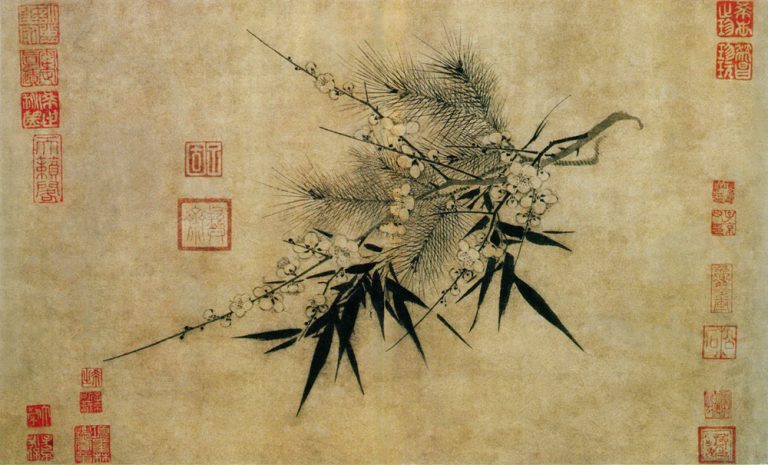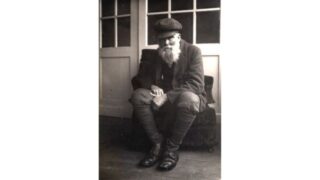Five books by French scholar Christophe Stener rediscover a forgotten but not irrelevant character of 20th-century literature and esotericism.
by Massimo Introvigne


Christophe Stener, Professor of Geostrategy at the Université Catholique de l’Ouest (UCO), Angers, France, is a scholar of both China and French and European religious and esoteric culture, literature, and iconography.
He has just published not less than five volumes devoted to French writer Ernest de Gengenbach (1903–1979). While not many remember Gengenbach today, he may be of interest to historians of different fields. He interacted for many years with André Breton and the Surrealist circles. A former seminarian who sometimes proclaimed himself an apostate from the Catholic faith and a Satanist, he repeatedly staged his return to Catholicism, befriended prelates, and was even taken seriously by the Vatican. As a Satanist, Gengenbach is of interest to scholars of Russian esotericist, sometimes called a Satanist, Maria de Naglowska, although specialists of Naglowska have so far missed her relationship with the French writer and the latter’s enormous manuscript on the Golden Mass.
Stener does not ignore the unpleasant features of Gengenbach’s personality, and his inclination towards using fraud and blackmail to survive. He believes, however, that he is worth rediscovering today, as he had a real influence on some French intellectual circles and is also a forgotten part of the history of Satanism.
Stener has published with Books on Demand (2022) two volumes on the life of Gengenbach, and another two on his works. A fifth volume reprints the book “Messes Noires” (Black Masses), which Gengenbach published in 1929 under the pseudonym Jehan Sylvius (all these books are available on Amazon). The following interview will hopefully give the readers a taste of Stener’s set of books (available in French only).
Massimo Introvigne (MI): After a very comprehensive study of the antisemitic iconography of Judas Iscariot, you have just published several volumes about Ernest de Gengenbach, a forgotten Frenchwriter. Why resuscitating him ?
Christophe STENER (CS): I reviewed his “Satan à Paris” book in my text about Judas you have been kind enough to refer to. Puzzled by the personage, I discovered that Surrealism academic research benignly neglected him as an epigone and someone who dared to damn André Breton and his group as Luciferian Marxist atheists, while Catholic research rejected his pious writings devoted to Virgin Mary as insincere and untrustworthy.
MI: You blame Gengenbach as a “Tartuffe” when he proclaimed himself to be “a Judas,” why ?
CS: Indeed he was a Judas to his mother, to Breton, to the Catholic Church, making a business out of his life torn “between Satan and the Virgin Mary.” A Tartuffe for his multiple aborted conversions, he extorted for all his life financial supports, for long periods, from the Catholic hierarchy. His mother, a pious widow, named her first son Ernest and made him an oblate as an act of redemption towards God for the death of her older brother, a seminarian who drowned. But alas! Ernest, after entering the seminary, was defrocked for dining with a female comedian, then found Madame de Warens in Plombières-les-Bains, a single woman fifty years older than Gengenbach who became his mistress and died quickly, making him the heir of one million French francs.


His letter answering the “Révolution surréaliste”’s investigation ‘What do you think of suicide?’ induced Breton to coopt him in the movement. He wrote a fake surrealist poem titled “L’Abbé de l’Abbaye,” became famous for his public apostasy that happened in the Adyar Temple of the Theosophical Society and for the publication of “Satan à Paris,” but, a few months later, he betrayed Breton and went for a retreat to the Abbey of Solesmes, in fact for the love of a girl who dreamed to be a nun. After World War II, he swindled the Jesuit Father Michel Riquet, the famous Lent-time preacher of Notre-Dame de Paris. Gengenbach was excommunicated for his sins, had a love affair with Nazi collaborator Lydie Bastien, who had delivered the leader of the resistance Jean Moulin to the head of Lyon’s Gestapo Klaus Barbie, but kept asking money from high-level Catholic prelates.
As a new Don Quixote, pretending to be able to convince the Algerian nationalist leader Ferhat Abbas to keep Algeria French, he managed to be commissioned both by General de Gaulle and by the Vatican. Posturing as the new Huysmans, he wrote clandestinely the very erotic and Satanist ritual of “La Messe d’Or,” inspired by his meetings with Maria de Naglowska… His life is worth a biopic.
MI: Indeed, a picaresque life! But is Gengenbach still worth reading in 2022?
CS: Yes, for two reasons. First, for his insights on the French intellectual life and, second, for his astounding Satanist books. Gengenbach proclaimed himself “The Confessor of his Time.” “L’Expérience démoniaque” and “Adieu à Satan” are hagiographic autobiographies relating his connections with leading materialist intellectuals such as Breton and Sartre, as well as with Catholic luminaries such as Maritain, Bernanos, and Mauriac. Gengenbach also had a lengthy correspondence with eminent Catholic bishops, including Mgr. Louis-Joseph Kerkhofs, bishop of Liège, Émile Guerry, archbishop of Cambrai, and cardinal Eugène Tisserant. He wrote an astonishing letter to Pope Paul VI, requiring to be invited to the Second Vatican Council and demanding to be officially put in charge by the Vatican to convert “his former comrades at war,” pretending to be able to convert even Simone de Beauvoir! At the same time, while he was begging some top Catholic church authorities to get money and have his religious works published, the libertarian publisher Eric Losfeld was reprinting his erotic-Satanist books.


MI: What about his connection with Breton?
CS: A love and hate relation. Gengenbach revered Breton as a sort of intellectual father, but as Judas who suffered from not being the preferred Apostle, he quitted the group, soon after Artaud, rejecting Breton’s Communist conversion. Notwithstanding his anti-Breton pamphlets “Christianisme et Surréalisme” and “Adieu à André Breton,” however, he continued to write letters to Breton where he professed his devotion to him until his death, pretending then to be the last living Surrealist.
MI: Can you introduce his Satanist works?
CS: “Messes Noires” is a compendium of the initiation rituals to Satanist, Luciferian, gnostic cults, and also deals with necromancy, incubi, and vampires. “La Papesse du Diable” is a gothic novel featuring the destruction of the Roman Catholic Church by Mongol invaders who crucify the last Pope, naked, on the Tour Eiffel. “Comment on force l’amour “ offer magic recipes compelling an unwilling partner to fall in love. From “Le Vampire surréaliste” Gengenbach derived an unpublished script, “Le Moine et la Sirène,” but his most impressive erotic-satanist work is “La Messe d’Or,” the ritual for a self-proclaimed Catholic schismatic gnostic Church, the first precept of which was “In the beginning was Sex!” Actually, Gengenbach was proposing a syncretic cult inspired by Maria de Naglowska, as well as by his occultist, gnostic, Satanist, Troubadour-style courtly love, and Tantric Buddhist readings. It is a 600-page manuscript with a potpourri of erotic, pornographic, blasphemous collages, of which the reader will find in my books large excerpts.
MI: Did Gengenbach personally participate in Black Masses?
CS: Yes. He fantasized, all his life, to perform the Golden Mass (Messe d’Or), with Anita Eckberg or other movie stars as priestesses. As an old man, as a forgotten, ill, broke erotomane he could only organize some cheap erotic shows with prostitutes, reminiscent of the Marquis de Sade. However, I am quite sure that he took part and even organized in his youth Black Masses, very likely including one in a brothel catering to the clergy as clientele that drove a prostitute to suicide.


MI: But was Gengenbach a true believer in Satanism—or Catholicism?
CS: This is the crucial question! Some months before dying, after his right leg had been amputated, bragging he was inspired by Rimbaud, he wrote a letter to the Virgin Mary. He tried to bargain with her that he will come back to Catholicism and destroy his Satanist and erotic works if, and only if, she would save him from his suffering…









